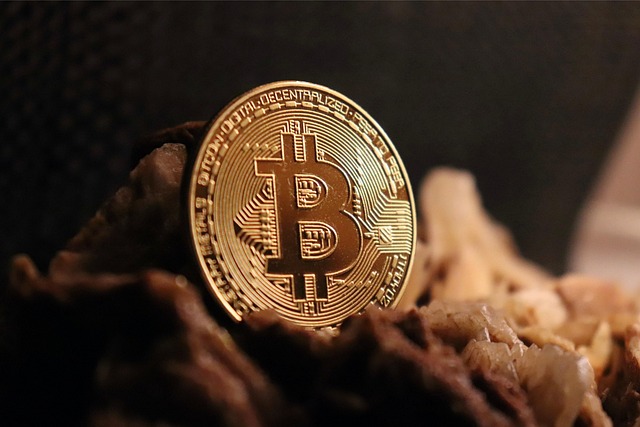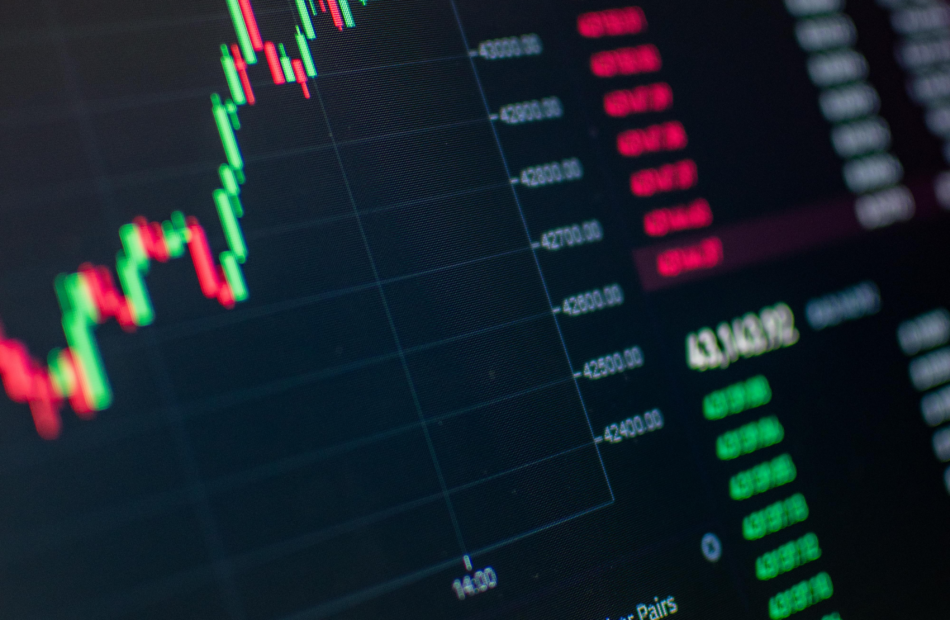Bitcoin’s 10% weekly gain amid worrying US economic data shows crypto trader sentiment shift
A key Bitcoin (BTC) metric signaled a potential shift in its positioning after BTC’s long-term holder realized cap (LTH Realized Cap) surpassed $18 billion for the first time since September 2024. Data from CryptoQuant indicated that this cohort has exhibited aggressive accumulation, which previously marked the BTC bottom in Q3 2024. The LTH realized cap measures the BTC cost basis of investors, holding their allocation for 155 days or more. A sharp increase hints that these long-term holders are in an accumulation phase, parallel with bullish behavior. Bitcoin LTH net position realized cap. Source: CryptoQuantAs illustrated in the chart, a spike in this metric has preceded bullish rallies in the past. Most recently, the LTH realized cap reached $18 billion on Sept. 8, 2024, after which Bitcoin registered 100% returns over the next few months. Another key confluence that matches the current bottom setup with September 2024 is the significant drop in open interest. BTC’s OI reached an all-time high of $39 billion in July but dropped by 25% by September. Similarly, Bitcoin’s open interest dropped 28% between Dec. 18 and April 8, Bitcoin open interest. Source: CoinGlassThe concurrent rise in LTH Realized Cap and a leverage wipeout strongly support the likelihood of a Bitcoin price bottom. However, Bitcoin’s open interest has surged by nearly 10% in the past 24 hours, suggesting that the price action following this spike could offer better directional bias in the coming days. Related: Bitcoiners’ ‘bullish impulse’ on recession may be premature: 10x ResearchBitcoin builds support at $79KAfter forming a new yearly low at $74,500 on April 7- April 9, BTC prices have rallied by almost 10% over the past three days. With respect to price levels below the $80,00 level, Glassnode data revealed that BTC had established credible support at the $79,000. In an X post, the data analytics platform mentioned, “Looking at Cost Basis Distribution, Bitcoin has built notable support at $79K, with ~40K BTC accumulated there. It has also worked through the $82.08K cluster (~51K BTC).”Bitcoin heatmap based on cost basis distribution. Source: X.comAs illustrated in the April 6- April 11 heatmap, supply distribution highlights investor accumulation patterns. This follows Bitcoin’s rally past $81,000, spurred by a 2.4% US CPI rate and President Trump’s 90-day tariff pause, with market sentiment leaning toward cautious optimism for a relief rally. Likewise, anonymous technical analyst Cold Blooded Shiller noted a descending trendline for Bitcoin, with BTC price testing a potential bullish breakout. The analyst said, “Got to admit, that’s looking very enticing for BTC.”Bitcoin 1-day chart analysis by Cold Blooded Shiller. Source: X.comRelated: Bollinger Bands creator says Bitcoin forming ‘classic’ floor near $80KThis article does not contain investment advice or recommendations. Every investment and trading move involves risk, and readers should conduct their own research when making a decision.
Bitcoin sellers tap out, clearing the path for a fresh run at new all-time highs
Bitcoin (BTC) price has rebounded by over 11% from the April. 7 low of $74,400, and analysts believe that onchain and technical indicators point to a sustained recovery.According to popular analyst AlphaBTC, Bitcoin will see a sustained recovery if it holds above $81,500.Bitcoin price reclaimed the $80,000 psychological level after retesting the “weekly open and filling in some of the inefficiency left by the Trump 90-day pause pump,” the analyst said in an April 10 post.“I really want to see it back above 81.5k soon, and we may see a bit more sustained upside as shorts get squeezed.”BTC/USD four-hour chart. Source: AlphaBTCSimilar sentiments were shared by fellow analyst Rekt Capital, who said that Bitcoin needs to produce a weekly close above $80,500 to increase the chances of recovery.“Bitcoin has recently lost the red Weekly level, just confirming BTC isn’t out of the woods yet,” Rekt Capital said in an April Post on X. “$BTC needs to stay above red until the Weekly Close for the price to reclaim this Weekly level as support.”BTC/USD weekly chart. Source: Rekt CapitalBitcoin price recovery could be fueled by “seller exhaustion”Bitcoin investors are approaching a degree of “near-term seller exhaustion,” as evidenced by the reduced magnitude of realized losses, according to onchain data from Glassnode. Looking at the 6-hour rolling window for realized losses, the market intelligence firm found that the magnitude of losses realized during these drawdowns has started to decrease with each successive price leg lower.“Bear markets are typically initiated by periods of heightened fear and substantial losses,” Glassnode said in its latest Week On-chain report. “This suggests a form of near-term seller-exhaustion may be starting to develop within this price range.”Bitcoin: 6-hour rolling losses. Source: GlassnodeRelated: Is Bitcoin price going to crash again?Bollinger Bands and W bottom hint at new price highsAfter hitting a five-month low of $74,400 on April 9, Bitcoin retested the lower boundary of the Bollinger Bands (BB) indicator, a line that has supported the price over the last five weeks, data from Cointelegraph Markets Pro and TradingView shows.BTC/USD weekly chart with Bollinger Bands. Source: John Bollinger/TradingViewThis is an encouraging sign from Bitcoin, according to the creator of the Bollinger Bands volatility indicator, John Bollinger. The Bollinger Bands indicator uses standard deviation around a simple moving average to determine both likely price ranges and volatility.Bollinger said that Bitcoin price could be forming the second low of a W-shaped pattern formation — a double-pronged bottom followed by an exit to the upside — on the weekly chart.“Classic Bollinger Band W bottom setting up in $BTCUSD,” Bollinger commented alongside a chart, adding that the pattern “still needs confirmation.”In this situation, Bitcoin’s drop to $76,600 on March 11 was the first bottom, and the recent drop to $74,400 was the second.If confirmed, BTC price could recover from the current levels first toward the neckline of the W-shaped pattern at $88,800 before rising toward the target of the prevailing chart pattern at $106,000. This article does not contain investment advice or recommendations. Every investment and trading move involves risk, and readers should conduct their own research when making a decision.
Bitcoin holds $82K as US dollar falls to 3-year low and PPI inflation drops sharply
Bitcoin (BTC) sought higher levels around the April 11 Wall Street open as the week’s final US inflation data gave bulls hope.BTC/USD 1-hour chart. Source: Cointelegraph/TradingViewAnalyst: PPI undershoot “great” for US trade warData from Cointelegraph Markets Pro and TradingView showed BTC/USD reaching highs of $83,245 as US Producer Price Index (PPI) data came in below expectations.The Index came in at 2.7% versus the anticipated 3.3%, while the core PPI print also surprised to the downside.An official news release from the US Bureau of Labor Statistics (BLS) added:“In March, over 70 percent of the decrease in the index for final demand can be traced to prices for final demand goods, which fell 0.9 percent. The index for final demand services declined 0.2 percent.”US PPI for final demand. Source: BLSReacting, trading resource The Kobeissi Letter was among those noting the rapid pace at which US inflation appeared to be slowing.“We just saw the first month-over-month decline in PPI inflation, down -0.4%, since March 2024,” it told followers in part of a post on X. “Both CPI and PPI inflation are down SHARPLY.”S&P 500 4-hour chart. Source: Cointelegraph/TradingViewRisk-asset performance, however, failed to reflect the notionally positive inflation developments. The S&P 500 was 0.2% lower on the day, while the Nasdaq Composite index was flat.As Cointelegraph reported, after stocks fell precipitously the day prior despite bullish inflation numbers, commentators explained that macro data was helping to fuel the ongoing US trade war.Continuing, crypto trader, analyst and entrepreneur Michaël van de Poppe saw a repeat playing out post-PPI. “PPI comes in significantly lower. That’s great for Trump and his strategy,” he argued, referring to trade tariffs implemented by US President Donald Trump. “The only thing that needs to be resolved is the on-going Trade War, but the ingredients are building up.”Bitcoin gets key bullish dollar triggerAnother macro development failing to provide its standard risk-asset tailwind came in the form of multiyear lows in US dollar strength.Related: Bollinger Bands creator says Bitcoin forming ‘classic’ floor near $80KThe US Dollar Index (DXY), which measures the dollar against a basket of US trading partner currencies, fell below the psychological 100 mark for the first time since 2022.US dollar index (DXY) 1-week chart. Source: Cointelegraph/TradingViewAs Cointelegraph reported, long-term lows on DXY have historically sparked a delayed BTC price bull run.“Traditionally, DXY going down is very bullish for $BTC, we now have a massive bearish divergence for DXY, which may suggest it goes to 90,” popular crypto analyst Venturefounder observed in part of an X post on the topic this week.“Last 2 times this happened triggered a Bitcoin parabolic bullrun in final phase of the bullmarket (lasting 12 months).”US Dollar Index (DXY) vs. BTC/USD chart with RSI data. Source: Venturefounder/XAn accompanying chart examined relative strength index (RSI) data for the DXY monthly chart, showing it retesting a downward-sloping trend line as support from above.This article does not contain investment advice or recommendations. Every investment and trading move involves risk, and readers should conduct their own research when making a decision.
US crypto miners may rush to buy rigs in tariff pause despite ‘clear disadvantage’
US Bitcoin mining firms will try to capitalize on the Trump administration’s recent tariff pause by stocking up on mining rigs, but the baseline 10% tariffs will still leave the industry at a disadvantage, industry executives say.President Donald Trump paused his administration’s hefty reciprocal tariffs until July 8, but kept a minimum 10% tariff on most countries bar China, which had its rate hiked to 145%.Hashlabs CEO Jaran Mellerud told Cointelegraph that while the 10% levy is much lighter than the initial tariffs, US miners are still at a “clear disadvantage” when it comes to purchasing mining machines, compared to competitors abroad.He said the baseline US tariffs aren’t enough “to make mining in the US unprofitable, but it definitely raises capital expenditure and will impact the long-term viability of new investments.”“We expect to see a short-term spike in machine imports as miners rush to get ahead of potential future tariff hikes,” Mellerud added.Source: Jaran MellerudA price hike on crypto mining rigs is already happening, Luxor Technology’s chief operating officer Ethan Vera told Cointelegraph.“US miners are still looking to purchase machines ahead of the potential further increase in 90 days. In addition, US-landed machines have run up in price, as have contracts with onshore assembly.”On April 2, Trump’s hiked tariffs placed levies on Thailand, Indonesia and Malaysia — countries home to three of the largest mining rig manufactures — at respective rates of 36%, 32% and 24%. Tariff instability will stunt US Bitcoin mining growthMellerud said in an April 8 report, before the pause on the hiked tariffs, that Trump’s levies could collapse US demand for mining rigs, to the benefit of non- US mining operations, as manufacturers will look outside the US to sell their surplus inventory for cheaper.He told Cointelegraph the now-lowered tariffs will offer some relief for US miners, but imposing the tariffs and then suddenly pausing them only added uncertainty to US Bitcoin mining firms looking to plan and scale.“What miners need is predictability and stable rules — not policy whiplash every few months.”Luxor’s Vera said that the policy changes “will certainly hurt growth” in the US.Related: Bitcoin hashrate tops 1 Zetahash in historic first, trackers showVera said Luxor has even been forced to rethink its strategy and consider expanding into international markets for future expansion.Trump pledged during his presidential campaign that he wanted all the remaining Bitcoin (BTC) to be “made in the USA.”Several members of Trump’s family have also partnered with Bitcoin mining firm Hut 8 to lead Bitcoin mining venture “American Bitcoin” late last month. The venture aims to build the world’s largest Bitcoin mining firm with strategic reserves. While the tariffs are broad in nature, the crypto mining industry simply isn’t a “high priority” for the Trump administration, Vera said.Trump’s tariffs have shaken up almost every market, including the crypto markets and Bitcoin, which is down 1.2% over the last 24 hours to $80,555, CoinGecko data shows.Bitcoin is now 26% off the $108,786 all-time high it set on Jan. 20 — the same day that Trump returned to the White House.Asia Express: Illegal arcade disguised as … a fake Bitcoin mine? Soldier scams in China
Top Bitcoin miners produced nearly $800M of BTC in Q1 2025
The largest publicly traded Bitcoin mining companies produced nearly $800 million worth of Bitcoin in the first quarter of 2025, reflecting continued growth across the sector as Bitcoin prices held near record highs.According to publicly available data compiled by Cointelegraph, the top Bitcoin mining companies produced over 9,700 Bitcoin (BTC) in the first quarter. With Bitcoin trading at around $81,600 at the time of writing, the total production was valued at around $800 million. Marathon Digital, the biggest Bitcoin mining company by market capitalization, led the pack with 2,285 Bitcoin (worth roughly $186 million) mined in Q1. On April 3, Marathon announced that it produced 829 BTC in March, up 17.4% from February and 10.5% higher than January.Related: Bitcoin miner Bitfarms secures up to $300M loan from MacquarieBitcoin miners produce 9,746 BTC in Q1 2025CleanSpark followed with 1,950 BTC mined in Q1, valued near $160 million. CleanSpark’s March performance also saw a 13.4% increase month-on-month. Iren, formerly Iris Energy, produced the third-highest amount for the quarter. The mining firm reported a total of 1,513 BTC, worth almost $124 million. Its 533 BTC produced in March was a 16.1% increase from its February performance. CompaniesMarketCap places Iren as the sixth-largest Bitcoin miner by market capitalization. Riot Blockchain, which ranks second only to Marathon Digital by market capitalization, had the fourth-largest BTC production during the quarter. The company reported production of 1,428 BTC (about $117 million) during the quarter. Like Iren, Riot produced 533 BTC in March, a 13.4% increase from February. Top Bitcoin miners by market cap. Source: CompaniesMarketCapHut8 shows 91% growth in Bitcoin productionHut 8 Mining, despite producing the least amount of Bitcoin among the top miners reviewed, showed the highest growth rate. The company mined 199 BTC in Q1 valued at about $16 million, including 88 BTC in March. That represents a 91% increase from the 46 BTC it produced in February.On March 31, Hut8 partnered with US President Donald Trump’s sons, Donald Trump Jr. and Eric Trump, to launch a new mining venture called American Bitcoin. The project aims to be the “world’s largest, most efficient pure-play Bitcoin miner.”In a previous Cointelegraph interview, Hut 8 CEO Asher Genoot said the company aims to dominate US Bitcoin mining. Genoot said the company plans to build one of the largest and most efficient Bitcoin mining platforms rooted in American soil. Magazine: Memecoin degeneracy is funding groundbreaking anti-aging research
Crypto trading firm warns of 'classic bull trap' as Bitcoin tags $82.7K
Bitcoin (BTC) risks becoming part of a “classic bull trap” when the US-China trade war takes its next step, analysis warns.In its latest bulletin to Telegram channel subscribers on April 10, trading firm QCP Capital cautioned over the latest crypto price rebound.QCP: Chinese “countermeasures” may leave crypto bulls strandedBitcoin and altcoins joined global stock markets in rallying over the past 24 hours thanks to a decision by US President Donald Trump to pause many of his new trade tariffs.China was a clear exception to the policy, with Trump doubling down on those tariffs while alleviating pressure on other countries. For QCP, now is the time not for relief, but to brace for China’s next move.“With China singled out so explicitly, market participants are bracing for Beijing’s counterpunch,” it said. “Should retaliation materialise in force, the exuberant rally could quickly morph into a classic bull trap.”BTC/USD 1-hour chart. Source: Cointelegraph/TradingViewSuch a scenario would form a repeat of market behavior already seen this week. As Cointelegraph reported, an earlier rumor of a tariff pause that failed to find official confirmation sparked whipsaw stock moves never seen before.“The surprise policy pivot temporarily soothed market anxiety, driving short-end crypto vols lower. Still, we advocate caution,” QCP continued. “Our desk continues to observe topside selling in May and June, suggesting that market makers are using the rally as an opportunity to offload unwanted positions.”Bitcoin to get “meaningful slice” of yuan outflowsOthers noted potential tailwinds for Bitcoin in the form of Chinese yuan devaluation as a stopgap measure in the trade dispute. USD/CNY hit 18-year lows of 7.35 on the day.Related: Crypto stocks see big gains alongside US stock market reboundNo deal, PBOC continues a very gradual yuan weakening. Shit ‘bout to get spicy. Luckily $BTC loves money printing and associated ccy weakness. pic.twitter.com/RcVkSj54O3— Arthur Hayes (@CryptoHayes) April 10, 2025“China beginning currency devaluation is more than just an economic signal—it’s a trigger,” Sina, co-founder of asset management firm 21st Capital, told X followers in part of a post on the topic. “Historically, when the yuan weakens, capital doesn’t stay put. It escapes. Some of it flows into gold, some into foreign assets—and a meaningful slice finds its way into Bitcoin.”USD/CNY 1-month chart. Source: Cointelegraph/TradingViewSina suggested that the macroeconomic reality would make BTC exposure more attractive going forward.“Now layer on rising tariffs, slowing global trade, and a deepening crisis of confidence in traditional financial systems. The result? A growing demand for neutral, borderless, incorruptible assets,” he concluded. “Bitcoin isn’t just a hedge anymore. It’s becoming a necessity in a world looking for stability outside the control of any one nation.”In subsequent discussions, he acknowledged that Bitcoin had probably not yet seen a long-term price bottom.Previously, Cointelegraph reported on various BTC price targets for a sustained rebound, with many of these focusing on $70,000.This article does not contain investment advice or recommendations. Every investment and trading move involves risk, and readers should conduct their own research when making a decision.
81.6% of XRP supply is in profit, but traders in Korea are turning bearish — Here is why
XRP has struggled to find sustained bullish momentum since reaching its cycle peak at $3.40 on Jan. 16, 2025. XRP (XRP) dropped as much as 46% over the past three months, but despite its recent drawdown, Glassnode data indicates that 81.6% of XRP’s current circulating supply remains in profit. While the profit supply percentage is down from its year-to-date high of 92%, the data set highlighted the retention value for holders despite the recent corrections. Percentage Supply in Profit for XRP, BTC, SOL ETH, TRX. Source: X.comCurrently, only Tron (TRX) has a higher profitable supply with 84.6%, while Bitcoin (BTC), Ether (ETH) and Solana (SOL) exhibited 76.8%, 44.9% and 31.6%, respectively.Analyst says Korean XRP traders are bearishData shows traders in Korea played a significant role in buying the first XRP dip below $2 on Feb. 3. Investors on Upbit and Bybit exchange filled their bids below $2, pushing the altcoin’s value back to $2.89 on Feb. 13. However, the sentiment has flipped over the past few days. Anonymous market analyst Dom pointed out that Korean traders executed 1.4 million trades on the XRP/KRW pair, with 62% being sell orders, resulting in a net sale of $120 million in XRP between April 6-7. XRP selling on Korean markets. Source: X.comThe data follows a trend of heavy selling from long-term whales and new investors as “retail confidence” in XRP continues to slip. Last week, Cointelegraph reported over $1 billion in positions being offloaded at an average price of $2.10Related: XRP price gains 13% after Trump 90-day tariff pause and XXRP ETF launchXRP’s higher time frame (HTF) chart lost its $2 support, dropping to a new yearly low of $1.61 on April 7, but the altcoin managed to reclaim this critical level on April 9. Even if XRP holds the $2 level, the price reflects a bearish market structure on multiple time frames. XRP 1-day chart. Source: Cointelegraph/TradingViewAs illustrated in the chart, XRP will potentially close a daily candle below its 200-day moving average (orange line), leading to a prolonged correction period over the next few weeks. The key demand zone remains between $1.63 and $1.27 (blue box), where a period of accumulation might unfold for the altcoin. Related: Ripple acquires crypto-friendly prime broker Hidden Road for $1.25BThis article does not contain investment advice or recommendations. Every investment and trading move involves risk, and readers should conduct their own research when making a decision.
Bitcoin price at risk of new 5-month low near $71K if tariff war and stock market tumult continues
Bitcoin (BTC) price made a swift move to $78,300 at the April 9 Wall Street open as “herd-like” price action in equities markets continued to spook risk-asset traders.BTC/USD 1-hour chart. Source: Cointelegraph/TradingViewBitcoin gyrates as stocks make historyData from Cointelegraph Markets Pro and TradingView showed BTC/USD retargeting five-month lows under $75,000 before rebounding leading into the NY trading session.A deepening US-China trade war kept stocks on their toes, having cost Bitcoin the $80,000 mark the day prior.Highly unusual market behavior had accompanied US tariff announcements, and China’s response with reciprocal tariffs saw the S&P 500 smash records with its roundtrip from lows to highs and back.“On a point basis, the S&P 500 just posted its largest intraday reversal in history, even larger than 2020, 2008 and 2001,” trading resource The Kobeissi Letter confirmed in ongoing market coverage on X. “You have just witnessed history.”S&P 500 chart. Source: The Kobeissi Letter/XKobeissi drew attention to volatility kicking in from the smallest of triggers, with markets particularly sensitive to statements from US President Donald Trump.“The problem with markets right now: Both bulls AND bears feel ‘uncomfortable’ in these market conditions,” it explained on the day.“Why? Because stocks can swing $5+ trillion in market cap on the basis of a single post from a single person: President Trump. This is why we are seeing ‘herd-like’ price action, where large daily gains turn into large daily losses, and vice-versa.”Crypto Fear & Greed Index (screenshot). Source: Alternative.meCrypto was no exception to the tug-of-war, with the Crypto Fear & Greed Index dropping to its lowest levels since early March.For Keith Alan, co-founder of trading resource Material Indicators, the status quo was unlikely to improve in the short term.“Part of me wants to sit on my hands and wait for this shit storm to pass,” he told X followers while examining order book conditions for Ether (ETH) and Solana (SOL).“Because I don’t think it is going to pass quickly, I’m not too eager to buy, even though some of these assets are on sale at great prices. That said, the fact that bids are piling in on some assets makes them very enticing.”Related: Black Monday 2.0? 5 things to know in Bitcoin this weekCME “gap” creates BTC price resistance above $82,000Focusing on BTC price action, popular trader and analyst Rekt Capital revealed a new nearby resistance level in the form of a recent “gap” in CME Group’s Bitcoin futures.“On the CME Futures Bitcoin chart, price broke down from its sideways range (black-black),” he wrote alongside a chart showing the gap between $82,000 and $85,000.“In confirming the breakdown from the range via a bearish retest, Bitcoin filled the CME Gap (red circle) in the process. That CME Gap is now a resistance.”CME Bitcoin futures 1-week chart with gap highlighted. Source: Rekt Capital/XFurther analysis gave a new BTC price range with $71,000 as its lower boundary based on previous trading volumes.“Bitcoin is experiencing downside continuation after upside wicking into the early March Weekly lows (red),” Rekt Capital summarized.“Having confirmed this red level as new resistance, BTC is now dropping into the $71,000-$83,000 Volume Gap to fill this market inefficiency.”BTC/USD 1-week chart with volume data. Source: Rekt Capital/XAs Cointelegraph reported, Rekt Capital is among those seeing a potential long-term reversal point at $70,000 or marginally lower.This article does not contain investment advice or recommendations. Every investment and trading move involves risk, and readers should conduct their own research when making a decision.
Shaquille O’Neal gets judge’s greenlight for $11M Astrals NFT settlement
Former NBA star Shaquille O’Neal has been granted final court approval to settle a class-action lawsuit for $11 million with Astrals non-fungible token (NFT) buyers.Florida federal court judge Federico Moreno granted approval of the settlement between O’Neal and the class group led by Daniel Harper in an April 1 order made available on April 8.The deal created a fund of up to $11 million for eligible class members and awarded $2.9 million in attorney fees and costs. All those who purchased Astrals NFTs from May 2022 to Jan. 15 and those who purchased the project’s native GLXY tokens up until mid-January are eligible. “The fee sought by lead class counsel has been reviewed and approved as fair and reasonable by plaintiffs,” Moreno’s order read.O’Neal was hit with the lawsuit in May 2023 over his founding and promotion of the Solana-based Astrals NFT project, which the suit claimed was an “offer and sale of unregistered securities.”The class group said they bought Astrals NFTs and “suffered investment losses” due to O’Neal’s “conduct” in promoting the project.In August, Judge Moreno recognized that the class suit had alleged that the former NBA player was a seller of the NFTs. O’Neal agreed to the settlement in November.Screenshot from court order on final settlement. Source: CourtlistenerNFT sales slumpThe Astrals NFT collection consisted of 10,000 unique 3D digital collectibles created in April 2022 by the artist Damien Guimoneau in a Solana-based project that promoted a virtual world where users could socialize and play with others, including the basketball star. Related: NFT sales plunge 63% in Q1, but Pudgy Penguins, Doodles buck trend There has been no activity or sales from the collection for the past two years, according to NFT marketplace OpenSea. Overall, NFT sales are still in deep bear market territory, with just $27 million sold as of April 7, down from more than $2 billion per week at the end of 2021, according to CryptoSlam.Magazine: 3 reasons Ethereum could turn a corner: Kain Warwick, X Hall of Flame
MEV bot loses $180K in ETH from access control exploit
A maximal extractable value (MEV) bot lost about $180,000 in Ether after an attacker exploited a vulnerability in its access control systems. On April 8, blockchain security firm SlowMist reported that the MEV bot lost 116.7 Ether (ETH) because of the lack of access control. Threat researcher Vladimir Sobolev, also known as Officer’s Notes on X, told Cointelegraph that an attacker exploited a vulnerability in the bot, causing it to swap its ETH to a dummy token. Sobolev said this was done through a malicious pool created by the attacker within the same transaction. The threat researcher added that this could have been prevented if the MEV owner implemented stricter access controls. Just 25 minutes into the exploit, the MEV’s owner proposed a bounty to the attacker. The owner then deployed a new MEV bot with stricter access control validation. Sobolev compared the exploit to a similar incident in 2023, where MEV bots lost $25 million after being exploited. On April 23, 2023, bots who performed sandwich trades lost their crypto to a validator that went rogue. Related: ‘Unlucky’ MEV bot takes out huge $12M loan just to make $20 in profitRise in fake MEV bot guidesAn MEV bot on Ethereum is a trading bot that exploits maximal extractable value. This is the maximum profit that can be extracted from block production. This is done by reordering, inserting or censoring transactions within a block. The bot observes Ethereum’s pool of pending transactions and looks for potential profits. These bots can do front-run, back-run, or sandwich transactions. This makes the bots very controversial as they steal value from regular users during high periods of volatility or congestion. Despite the controversies surrounding MEV bots, many continue to use them. However, beginners looking to profit from these bots can often fall into a different trap crafted by scammers. Sobolev told Cointelegraph that there has been a rise in fraudulent MEV bot tutorials online. The researcher said the tutorials offer ways to earn money using MEV bots and publish fake installation instructions. “Very often, this will simply allow hackers to steal your money,” Sobolev said. He urged users to check their resources and ensure they are not falling prey to scammers. Magazine: How crypto bots are ruining crypto — including auto memecoin rug pulls










